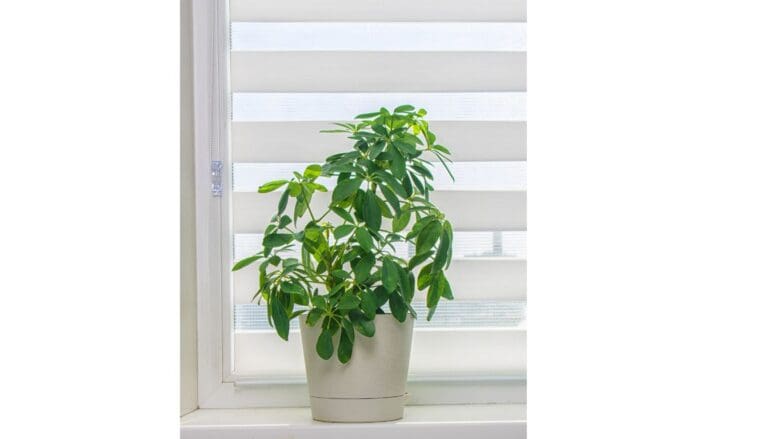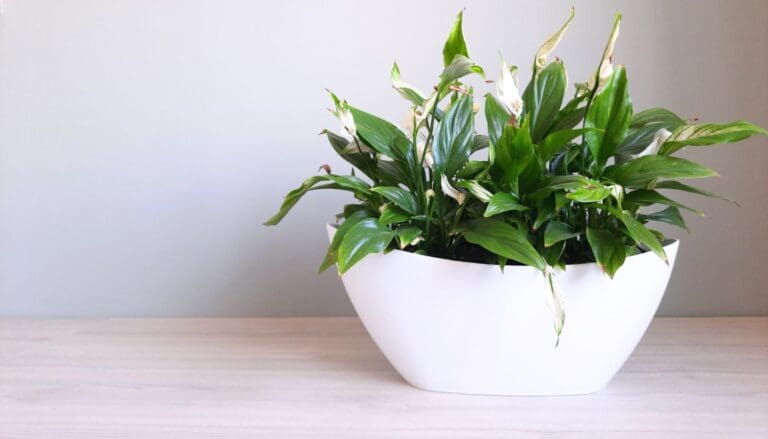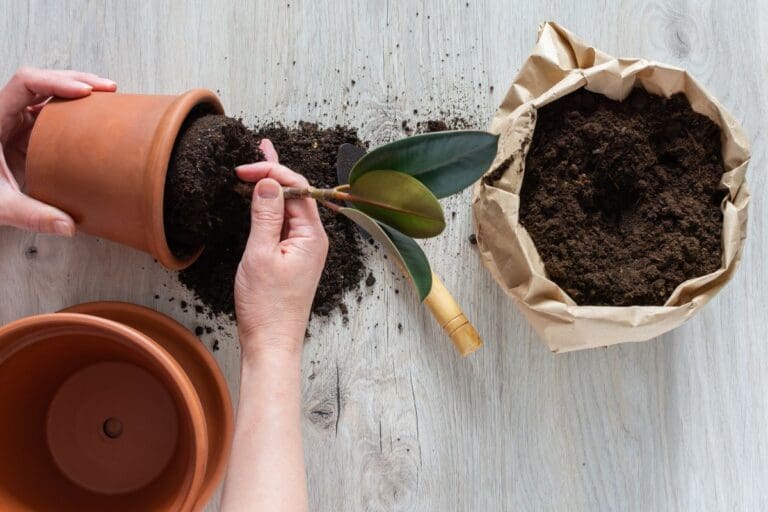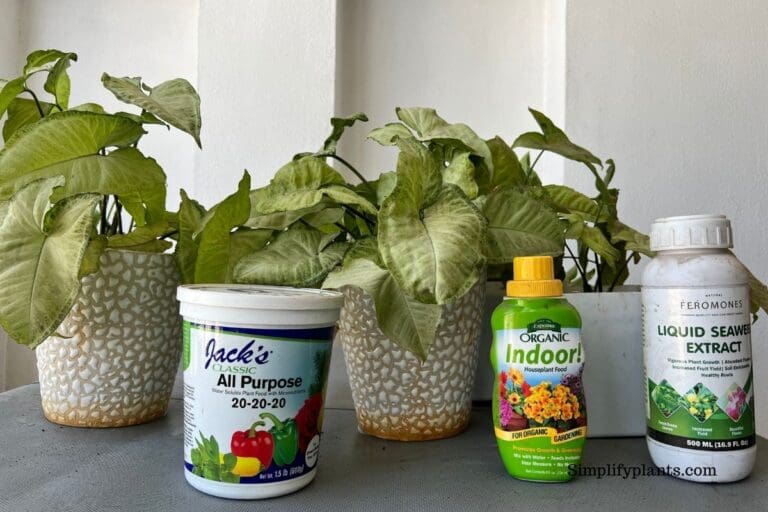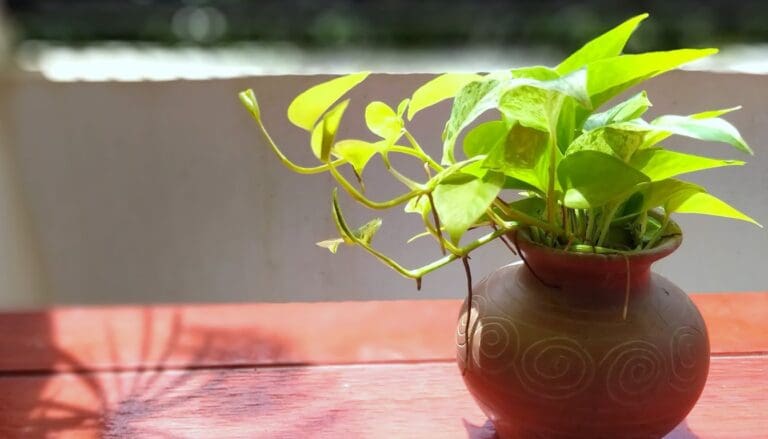Why Is My English Ivy Turning Brown? (11 Causes+Fix)
English Ivy plants have a reputation for being hardy. But, their leaves can turn brown and crispy if something goes wrong with their care.
Overwatering, temperature fluctuations, low humidity, and overfertilization can cause brown leaves on English Ivy. Prune the brown leaves and identify the exact cause behind them. Don’t go overboard with watering. Maintain the ideal temperatures and humidity. Avoid fertilizing in winter.
The leaves of your Ivy would turn brown if you missed the initial signs. Hence, act fast when you notice any issue.
In this article, I will discuss all the possible reasons that cause brown leaves on your English Ivy and their possible cure.

Please note: Simplify Plants is reader-supported. Some links in the post are affiliate links and I get a commission from purchases made through links in the post.
Is it common for the English Ivy leaves to turn brown?
Like any other plant, the leaves of English Ivy will become old at some point.
As the leaves age, they fail to produce enough chlorophyll.
This causes the leaves to turn yellow first and then brown.
After the leaves turn brown, they fall off the plant to provide space for new growth.
You will find these leaves at the bottom of the plant, and you can cut them to give space for new growth.
But if the English Ivy starts turning brown without any new growth, it might be under stress.
In such a condition, you need to inspect the plant to find the reason behind the brown leaves.
And then take action to fix the same.
Why is my Ivy turning brown?
Brown leaves indicate that your Ivy is struggling with some problems and needs proper care to recover.
There can be several reasons that cause brown leaves in English Ivy:
- Overwatering
- Underwatering
- Poor drainage
- Direct Sunlight
- Insufficient light
- Extreme temperatures
- Low humidity
- Chemical sensitivity
- Overfertilization
- Repotting stress
- Pest infestations
Let us discuss each of these in detail to identify the exact reason behind brown leaves on your English Ivy.
Overwatering the English Ivy

One primary cause for English Ivy to develop brown leaves is overwatering.
We often overwater the plant without knowing whether the plant is ready for watering yet.
English Ivy can’t tolerate soggy soil.
If the soil becomes soggy and your Ivy starts looking dull, you are overwatering it.
Overwatering leads to waterlogged soil that reduces the oxygen supply in the soil.
The roots start suffocating due to this.
Prolonged overwatering can give rise to the root rot disease.
Such decaying roots will fail to supply water and nutrients to the plant.
Due to this, it will become weak, and its leaves will turn brown.
How to fix an overwatered ivy?
- Stop watering your English ivy ant and keep it under bright filtered sunlight to let the soil dry.
- Take the plant out of its pot and check the root system for damage.
- Prune all the soft, mushy, and brown roots keeping only the healthy ones behind.
- Apply fungicide on the healthy roots and repot the plant in a fresh soil mix.
- Avoid watering and fertilizing the plant until you notice any new growth.
- Reduce watering the plant during winter as it slows down its growth during this season.
- Once your Ivy recovers, water the plant only after checking the soil’s moisture level.
- Water the plant if the top 2-3 inches of the soil feels dry.
Underwatering the English Ivy
If the leaves of your ivy plant become dry, crispy, and brown, it indicates that it has not received enough water.
If you do not provide your Ivy plant with adequate watering, it will experience health issues.
Underwatering occurs if you water the plant less or at irregular intervals.
Lack of moisture and nutrients will cause the Ivy plant to become weak, leading to dry and brown leaves.
How to fix an underwatered ivy?
- Take the Ivy out of the container and place it in a water-filled bucket.
- Allow the plant to sit in the water for 30 minutes until the soil soaks the water.
- Once is soil becomes moist, put the plant back into the pot and keep it in a well-lit area.
- You can use self-watering pots if you don’t remember when to water the plant.
- Never place the plant under direct sunlight. Otherwise, the soil will dry out fast, and the plant will get sunburned.
Poor draining soil

Soil plays a crucial role in any plant’s life.
If you use the wrong soil type for your Ivy, it will develop brown leaves.
If the soil drains too fast, it will fail to hold enough moisture, leading to dehydration and brown leaves.
But, if the soil is compact, it will hold moisture for longer.
Due to this, your Ivy will experience waterlogged conditions, leading to brown leaves.
How to improve soil texture?
If you are growing your Ivy in the wrong soil mix, you must add some ingredients to the soil to improve its texture.
- If the soil drains too slow, you can improve its drainage by adding perlite, compost, and sand to it.
- If the soil drains fast, increase its retention by adding peat moss, vermiculite, and mulch.
- Or, you can prepare a new potting mix by adding equal parts of peat moss, perlite, and soil.
Exposure to direct sunlight
English ivy plants can’t thrive in high temperatures.
If you expose them to direct sunlight, the leaves will get scorched by the intense heat.
This will result in the leaves turning dry and brown.
The excess heat will increase the moisture loss, causing the plant to dehydrate.
The heat from radiators or heating vents can also make the leaves brown.
How to fix the problem of direct sunlight?
- If your Ivy plant has brown leaves due to the direct sunlight, move it to the shadier spot of your house.
- Avoid keeping your plant near any heating object.
- Prune all the brown and damaged leaves from your plant.
- Water your plant enough so that it can always stay hydrated.
- Avoid fertilizing the plant until you notice any recovery.
Not enough light
English Ivy prefers to grow in medium to bright light.
Low or lack of light can cause the leaves to turn yellow and brown.
When the light is low, the plant fails to produce chlorophyll, essential for the green color.
Lack of chlorophyll causes the leaves of your Ivy to turn yellow or brown.
How to maintain the ideal light for English Ivy?
- To fix the low light problem, move your Ivy from the dark spot and shift it to a bright area of the house.
- The ideal spot is an east or north-facing window that can provide bright indirect light.
- Don’t keep the Ivy near a south-facing window, as harsh afternoon sunlight can burn its leaves.
- During winter, you can keep your plant outside for a few hours when light levels are low.
Temperature fluctuations
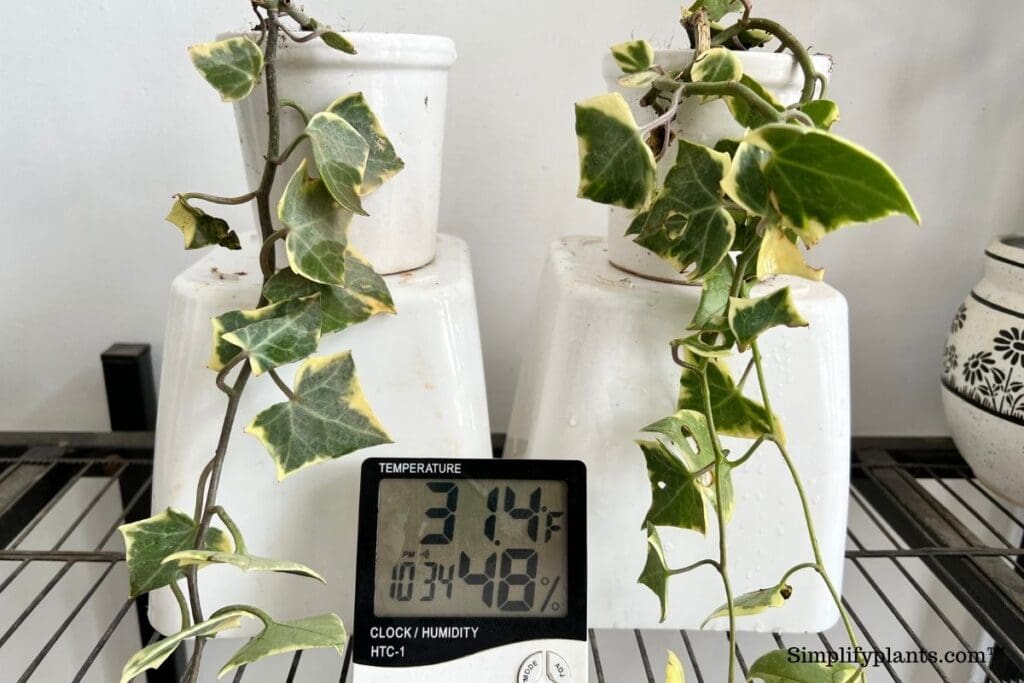
English ivy thrives with temperatures between 70 to 90°F.
Too high or low temperatures can be harmful, resulting in brown leaves.
When temperatures are high, the plant loses moisture from the leaves faster.
This causes dehydration, leading to wilted, curly, crispy brown leaves.
But, if temperatures are low, the plant experiences stress due to tissue damage.
It shows brown tips and edges on leaves.
How do you maintain the ideal temperatures for English Ivy?
- Keep your English ivy away from hot and cold drafts.
- Keep the plant away from heaters, radiators, and fireplaces to prevent hot drafts.
- Don’t keep the Ivy near frosty doors, leaky window sills, air conditioners, and refrigerators to prevent cold drafts.
- Never place your Ivy near a window that opens and closes too often.
- You need to keep it in a place where it receives uniform temperatures.
- Also, never bring your plant outdoors when the temperatures are too high or low.
Dry air
Ivy plants can tolerate dry air to an extent.
But, low humidity levels can cause the leaves and edges of your plant to turn brown and crispy.
English ivy needs at least 40-50% humidity for survival.
In dry conditions, the plant’s transpiration rate increases, resulting in moisture loss.
This leads to brown and dry leaves.
How to raise humidity?
- You can raise the humidity around your Ivy plant by misting the leaves using a spray bottle 3-4 times a week.
- Group your ivy plant with other moisture-loving houseplants.
- You can also use a humidifier to maintain the ideal humidity around the plant.
Mineral build-up due to poor water quality
The leaves of your ivy plant may turn brown and dry due to the chemicals present in the water.
Using tap water high in salts can be very toxic to the plant.
Chemicals such as chlorine and fluoride in tap water can build up in the soil.
Over time, it can harm the root system of your Ivy.
These salts can destroy the leaf’s cells and cause extreme stress to the plant.
This results in brown tips and edges on the leaves.
How to improve the water quality?
- Use filtered or distilled water for watering your Ivy.
- You can also use rainwater for watering the plant as it is the safest and purest form of water.
- If you have no option other than tap water, allow the tap water to sit overnight before adding it to the plant. The excess minerals will evaporate, and the tap water will become safe for use.
- If the soil has a lot of salt content, repot the Ivy in a fresh soil mix.
Overfertilizing the English Ivy

Fertilizing the Ivy with higher doses doesn’t encourage faster growth.
Overfertilization does more harm than good to the plant.
Overfertilization causes excess fertilizer build-up in the soil.
The roots take up these salts along with water and carry them to different parts of the plant.
This causes toxicity in the plant’s cells, due to which the leaves start to show brown tips and edges.
How to fix overfertilization?
- Remove all the damaged parts from your Ivy to fix overfertilization.
- Remove the plant from the pot and check the roots.
- If the roots are healthy, remove the excess fertilizer by scraping the top layer of the soil.
- After that, add a new layer of fresh soil.
- You can also remove the extra salt by washing the soil with water. Make sure not to overwater the plant.
- If you find damaged roots, prune them and repot your Ivy in a fresh soil mix.
Repotting stress
Repotting the plant is important for maintaining its healthy growth.
You should repot with the utmost care.
Otherwise, the repotting stress will increase for the plant.
This stress can cause the leaves of your Ivy to turn brown.
It is natural for your Ivy to suffer from some stress if you have recently repotted it.
The plant will take some time to adjust to the new environment.
You should not get worried about this browning and give the plant some time to recover from stress.
How to fix the repotting stress?
- When repotting your Ivy plant, take out the plant with care.
- Always repot your Ivy plant in a pot that is 1-2 inches larger than the previous pot. Also, make sure the pot has drainage holes.
- After repotting, avoid changing the growing location of your plant. A location change can increase stress.
- Repot the plant only during its growing season, i.e., spring and summer.
Pest attack

When your ivy experiences unfavorable conditions, it becomes vulnerable to various pests.
Low humidity, low light, overfertilization, high humidity, and overwatering encourage pest infestations.
Common pests you might notice are mealybugs, aphids, whiteflies, spider mites, and scales.
They feed on the leaves and suck out the moisture and nutrients, making the plant weak and unhealthy.
As a result, the leaves turn pale and brown.
How do I get rid of pests?
- At first, isolate your Ivy plant in one place to prevent the spread of bugs to other houseplants.
- Wash your plant with clean water to remove the pests.
- Clean the affected areas with cotton swabs dipped in isopropyl alcohol. This will help to remove the remaining pests.
- Spray Neem oil or horticulture oil. Once the plant is pest-free, spray a Neem oil solution once a month to prevent pest attack.
- Avoid keeping your plant in low light and humid conditions until it recovers.
Final words
Brown leaves are a common problem, but your Ivy will recover if you find out the exact cause of this problem.
Allow the plant to live in a spot with proper light, temperature, and humidity. Water the Ivy after checking the soil. Fertilize with a diluted dose during the growing season. Spray a Neem oil solution every month to keep the pests away.
You can prevent the brown leaves by taking the right care of your Ivy. Your efforts to keep the plant healthy will prevent the browning of the leaves.
Reference: Researchgate, University of Tennessee, Mississippi State University, Central Florida Research and Education Center, U.S. DEPARTMENT OF AGRICULTURE.
Recommended Garden Supplies
| Product Image | Our Recommended Gardening Supplies | Check Offers! |
|---|---|---|
Top Top
Top
Top
Top
Top
Top
Top
Top | rePotme Houseplant and Tropical Classic Potting Soil Mix | Check Offer On Amazon |
 Top
Top
Top
Top
Top
Top
Top
Top | Espoma Organic Indoor Plant Food | Check Offer On Amazon |
 Top
Top
Top
Top
Top
Top
Top
Top | GooingTop LED Grow Light 6000K Full Spectrum Clip Plant Growing Lamp | Check Offer On Amazon |
 Top
Top
Top
Top
Top
Top
Top
Top | Soil Moisture Meter | Check Offer On Amazon |
 Top
Top
Top
Top
Top
Top
Top
Top | Govee Hygrometer Thermometer, Bluetooth Enabled! | Check Offer On Amazon |
 Top
Top | LEVOIT Humidifiers for Large Room(Best For Plants) | Check Offer On Amazon |
 Top
Top
Top
Top
Top
Top
Top
Top | Upgraded DIY Automatic Drip Irrigation Kit, 15 Potted Houseplants Support | Check Offer On Amazon |
 Top
Top
Top
Top
Top
Top
Top
Top | Stainless Steel Heavy Duty Gardening Tool Set | Check Offer On Amazon |
 Top
Top
Top
Top
Top
Top
Top
Top | Bonide Insecticidal Soap | Check Offer On Amazon |
 Top
Top
Top
Top
Top
Top
Top
Top | Bonide 32 oz Spray Neem Oil for Organic Gardening | Check Offer On Amazon |
 Top
Top
Top
Top
Top
Top
Top
Top | Garden Safe Fungicide | Check Offer On Amazon |

